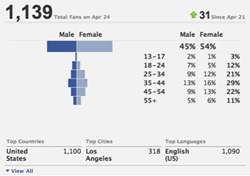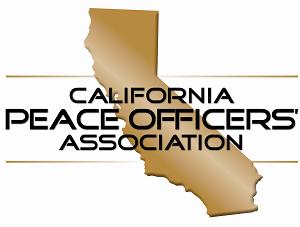 In January of 2008, Chief John Neu redesigned the Community Affairs Division of the Torrance Police Department (CA) by more than doubling the size of the Division and bringing together the necessary resources to forge new partnerships with the Community, while at the same time, strengthening partnerships already established. His directive was simple; to get out in the community and interact with them by finding out what they needed from their police department, what they wanted from their police department and how the department can do better. With this, the Community Affairs Division began its task of reaching out to as much of the Community as possible. The task was daunting, as most interaction with the community was then based on outdated snail mail and phone calls. With over 140,000 residents alone, even the expanded Community Affairs Division could not make a dent in the communication flow necessary to push out real time information to the community.
In January of 2008, Chief John Neu redesigned the Community Affairs Division of the Torrance Police Department (CA) by more than doubling the size of the Division and bringing together the necessary resources to forge new partnerships with the Community, while at the same time, strengthening partnerships already established. His directive was simple; to get out in the community and interact with them by finding out what they needed from their police department, what they wanted from their police department and how the department can do better. With this, the Community Affairs Division began its task of reaching out to as much of the Community as possible. The task was daunting, as most interaction with the community was then based on outdated snail mail and phone calls. With over 140,000 residents alone, even the expanded Community Affairs Division could not make a dent in the communication flow necessary to push out real time information to the community.
Therefore, as the Commander of the Community Affairs Division for the Torrance Police Department, it was the mission of Lieutenant Stephen D’anjou to maximize the department’s community outreach efforts. It is the responsibility of the Community Affairs Division to interact with the city’s residents independently, to communicate with the Home Owner Association groups, the business community, the faith based community and the special interests groups. Thus, Lt. D’anjou asked himself three questions on how to better outreach to the community and always came up with the same answer. These questions were:
- How do we better bridge a tight partnership with the entire community?
- How can we better market the “brand” of the Torrance Police Department?
- How can we efficiently and effectively “push” out real-time information to the community for the benefit of both the police department and community equally?
The answer to those questions continued to be the need to utilize electronic media which naturally led to the need to utilize Social Media (SM).
Faced with the challenge of connecting with an increasingly tech savvy community in a time when budgets were being reduced instead of expanded, the choice was made to utilize our website and email system to push out real time crime information and crime prevention training opportunities. We began with this information on our website and using our already established Neighborhood Watch program to publicize our new efforts. Shortly thereafter, we created an in-house email alert program that allowed all residents, visitors or anyone with interest in Torrance PD, to sign up to receive Crime Alert Flyers or any other bulletins issued. These Crime Alert Flyers alerted and educated the Community related to crime trends and what to look for that could be classified as “suspicious.” The community was encouraged not to engage possible suspects and to call the police to report suspicious activity.
Within weeks of beginning our “Crime Alert Flyer” program, we realized success as citizens were receiving information of crime trends in their own neighborhood and then calling to report the suspicious activity. In one early example, a neighborhood was experiencing crimes involving a scammer posing as a distraught neighbor looking for “gas money”. This suspect had been operating in various parts of the City off and on for several months.
After receiving a number of phone calls from concerned citizens, The Community Affairs Division drafted a Crime Alert Flyer and emailed it to the email alert database and posted it on the website. Within hours, we received calls from citizens who had challenged the would-be scammer as she attempted her scam with them. At least one citizen who answered her door actually showed the suspect the flyer and was able to obtain a license plate as the suspect fled.
Several other successes were experienced with our e-mail alert program and Crime Alert Flyers. On more than one occasion, citizens received flyers regarding residential burglary information and then called when they observed suspicious activity in their neighborhood. Officers were able to respond and arrest suspects prior to them being able to flee the area.
To reinforce the importance of calling and to show the Department’s appreciation, we implemented a practice of presenting the reporting citizen and presenting them with a Certificate of Appreciation, signed by the Chief, for their willingness get involved and report the crime.
Our e-mail alert database existed prior to Facebook and Twitter. While some people don’t consider e-mail a type of SM, for the purpose it serves our Department and Community, I am going to consider it a SM.
After several successful months of utilizing our website and email database, there was still a need to reach more people with more real time information. There was a need to streamline the process and allow citizens to obtain information without the need to be signed up by Community Affair personnel. There was a need to reach out to citizens without requiring them to log on to the website to obtain information…those that wanted information at their fingertips. While strategizing with his divisional team, Lt. D’anjou decided to dive into the global world of Social Media. Lt. D’Anjou familiarized himself with the powerful tools of SM that pushed well beyond the static police department website. As a reader of this article, I am sure we all know what SM is, so let’s look at how the Torrance Police Department is currently utilizing SM and try to measure some results.
In April of 2009 the Community Affairs Division launched its Twitter page. As with any law enforcement organization utilizing a new technology, we began slowly by posting simple information about Crime Alert Flyers and other documents on our website. Once we saw the success and the ease of posting and we began to see our subscribers continue to grow, we added additional information such as traffic information and real time crime information as appropriate. After a rather large earthquake was felt in the Los Angeles area, we were able to obtain a tweet from the US Geological survey and then re-tweet that information directly to our subscribers…all within a matter of minutes of the earthquake. There was no need to post information on our website first and our citizens and local leaders took notice of how quickly our information was getting out. The requests for more information grew and were being talked about in the community and re-tweeted several times by our subscribers. Our postings were going viral, albeit at a somewhat localized level.
In July of 2009 we added Facebook as another SM component to our community outreach efforts. We linked our Facebook postings directly to our Twitter account so there was no need to complete additional postings. With one posting on Facebook, both accounts were updated. As with our Twitter account, we originally began slowly by posting less formal information and photos from events that the Community Affairs Division was attending as well as general department information. This information primarily consisted of victim awareness training opportunities for the community, Press Releases, and Neighborhood Watch Newsletters. As with each previous entry into the SM world, this new venture was very well received by the community. However, we thought we could do more with SM to educate the community and further reduce crime. We continued to work with our Detective and Traffic Divisions to obtain additional information to post for the community. This desire to push, push, push “desired” information to the community was never allowed to jeopardize criminal investigations, nor identify victims of crimes and we needed to continue to respect confidentiality, but the desire continued to be “lets get out there!”
We routinely put “Traffic Alerts” out on Facebook and Twitter to inform the community related to road closures and/or congestion. When we receive information of pre-scheduled road closures or intersection repairs, we push that out giving the dates and time. When incidents occur without notice (i.e. accidents and/or transformers blowing that blacks out signals), we get that information out as soon as possible as well. Surprisingly, my perception is that the community appreciates the traffic information more than they do the crime information. At least that is where I get the most feedback.
As we have continued learning new ways to utilize SM, we have expanded the information we push via all of our programs. We have opened up the list of authorized users of our programs to included our on-duty Watch Commanders so that real time information such as traffic conditions, some in progress crimes, suspect searches/containments and other information can be posted to the Community as needed at all hours of the day and night.
Therefore, we believe we are maximizing our electronic outreach through these three SM’s.
As of the date of this article in late-April, Torrance PD had 1,139 Facebook followers and 625 Twitter subscribers. On September 1, 2009 we had only 310 Facebook followers. So we have had some good growth.
Our e-mail subscriptions are just over 3,100 at the time of this article, but we have seen a spike in registration over the past two months. There is now a link on the department’s website where citizens can register an e-mail address to receive the same information that is being pushed out on Facebook and Twitter. As we all know, not everyone has a Facebook or Twitter account and a majority of the population has an e-mail account. I believe that as we get more “generous” with the information that is being pushed out (primarily related to crime and traffic), these SM’s are being marketed by “word of mouth” and everyone is jumping on board to one of the three SM’s we push.
We will continue to be innovative in our approach and continue to maximize our community outreach through SM. As we head into the Z-Generation (aka: i-Generation), we believe SM is the most efficient and most effective way to keep our community informed.
Mark Athan is a Lieutenant at the Torrance PD and currently commands the Community Affairs Division. Lt Athan authored this article on behalf of Torrance Chief John Neu who will be a member of the panel, “Social Media: What is it and who’s using it?” at the CPOA (California Peace Officers Asso) Training Symposium. The former Commander of the Community Affairs Division, Lt Steve D’anjou, contributed to this article. Email Lt Athan at mathan[at]torranceca[dot]gov












